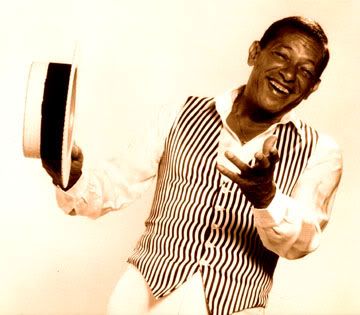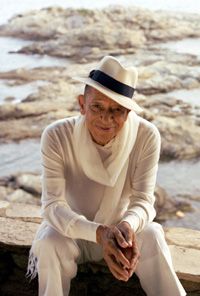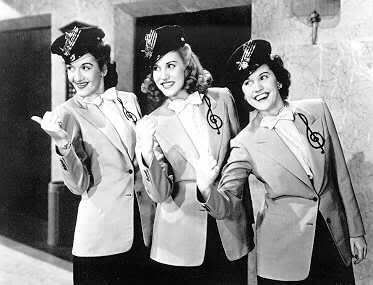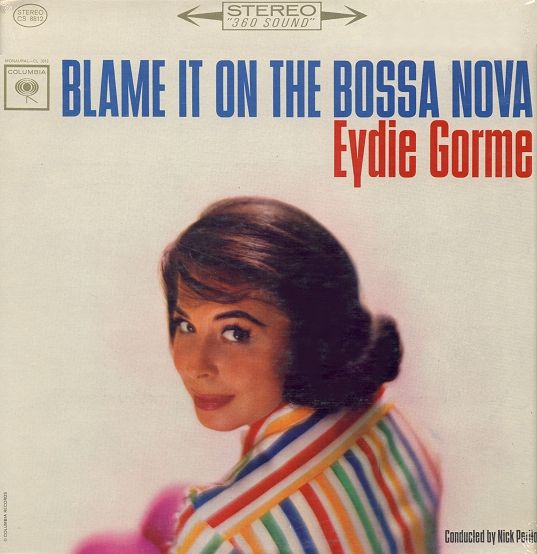eu sunt o mare iubitoare de bossa nova asa ca ........
WHAT IS BOSSA-NOVA
Created in Brazil in the late 1950s during a period of political change and economical growth, bossa nova has been often described as the music of the Brazilian middle and upper classes. This music style originated in the wealthy neighborhoods that sprouted along the beaches of the city of Rio de Janeiro and both its music and lyrics were composed by middle and upper-class musicians and marketed to the same economic group. For this reason, bossa nova was criticized by some for emphasizing a carefree way of living that little resembled the life of most Brazilians, the great majority of which belonged to the working class.
Indeed, bossa nova compositions often spoke of love, the beach, and beautiful women and seemed to be a depiction of the author’s bohemian life rather than a tale of Brazilians’ daily struggles as usually happened with samba, a music genre popular among the working class. “The Girl from Ipanema,” which became popular outside of Brazil both in its original Portuguese form and in translation, is a perfect example of the uncommitted quality of bossa nova songs. “The Girl from Ipanema” is nothing more than the composer’s description of a woman walking down towards the beach, the sweet way in which she moves and how beautiful she is, culminating with the author’s statement that she’s the most beautiful thing he’s ever seen go by. The music that accompanied the first wave of bossa nova lyrics, while unique, used the same altered chords found in jazz music combined with the drum beat characteristic of samba.
Perhaps ironically, bossa nova, the music style associated with complacence, is also considered responsible for the birth of the protest music of the 1960s that denounced the political uproar Brazil found itself in that led to the military coup of 1964. Critical of the insipid character of bossa nova lyrics and influenced by the precarious political and economic situation of Brazil, artists started using music to voice their opinions and as a vehicle to teach the largely uneducated Brazilian population about their country’s current social, political and economic status.
Following the coup of 1964, a new generation of bossa nova musicians emerged. The music they composed was radically different from that created by the first generation of bossa nova musicians and depicted the plight of the Brazilian population and denounced the country’s newly installed military government. In addition, this new type of bossa nova music had a nationalistic character that its predecessor lacked. This new wave of bossa nova musicians not only sang about the hardships of Brazilians, especially about the life in the drought-stricken northeastern region of the country; the music they composed to accompany their lyrics also made use of traditional Brazilian instruments and borrowed from other genres of Brazilian music like the type of samba heard in the urban slums. But in spite of the differences that distinguish them from one another, both styles of bossa nova were intrinsically linked to Brazil’s history and reflected the historic period in which they were created, one born during a time of growth and the other created in a time of struggle.
ANTONIO CARLOS JOBIM a.k.a. TOM JOBIM
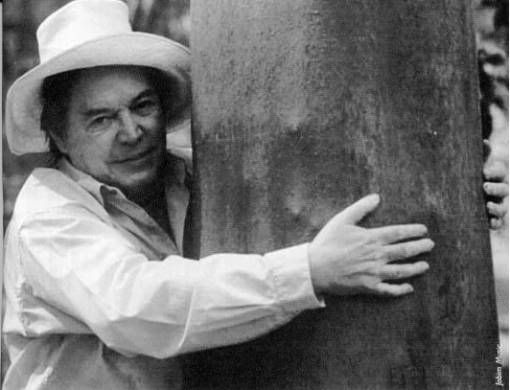
Born: Jan 25, 1927 in Rio de Janeiro, Brazil.
Died: Dec 8, 1994 in New York, NY.
Genres: Latin.
Styles: Brazilian Jazz, Latin Continuum, Brazil, Latin Folk, Latin Jazz, Bossa Nova, World Fusion.
Instruments: Vocals, Composer, Piano, Guitar.
It has been said that Antonio Carlos Brasileiro de Almeida Jobim was the George Gershwin of Brazil — and there is a solid ring of truth in that, for both contributed large bodies of songs to the jazz repertoire, both expanded their reach into the concert hall, and both tend to symbolize their countries in the eyes of the rest of the world. With their gracefully urbane, sensuously aching melodies and harmonies, Jobim's songs gave jazz musicians in the 1960s a quiet, strikingly original alternative to their traditional Tin Pan Alley source.
Jobim's roots were always planted firmly in jazz; the records of Gerry Mulligan, Chet Baker, Barney Kessel and other West Coast jazz musicians made an enormous impact upon him in the 1950s. But he also claimed that the French impressionist composer Claude Debussy had a decisive influence upon his harmonies, and the Brazilian samba gave his music a uniquely exotic rhythmic underpinning. As a pianist, he usually kept things simple and melodically to the point with a touch that reminds some of Claude Thornhill, but some of his records show that he could also stretch out when given room. His guitar was limited mostly to gentle strumming of the syncopated rhythms, and he sang in a modest, slightly hoarse yet often hauntingly emotional manner.
Born in the Tijuca neighborhood of Rio, Jobim originally was headed for a career as an architect. Yet by the time he turned 20, the lure of music was too powerful, and so he started playing piano in nightclubs and working in recording studios. He made his first record in 1954 backing singer Bill Farr as the leader of "Tom and His Band" (Tom was Jobim's lifelong nickname), and he first found fame in 1956 when he teamed up with poet Vinicius de Moraes to provide part of the score for a play called Orfeo do Carnaval (later made into the famous film Black Orpheus). In 1958, the then-unknown Brazilian singer Joao Gilberto recorded some of Jobim's songs, which had the effect of launching the phenomenon known as bossa nova. Jobim's breakthrough outside Brazil occured in 1962 when Stan Getz and Charlie Byrd scored a surprise hit with his tune "Desafinado" — and later that year, he and several other Brazilian musicians were invited to participate in a Carnegie Hall showcase. Fueled by Jobim's songs, the bossa nova became an international fad, and jazz musicians jumped on the bandwagon recording album after album of bossa novas until the trend ran out of commercial steam in the late '60s.
Jobim himself preferred the recording studios to touring, making several lovely albums of his music as a pianist, guitarist and singer for Verve, Warner Bros., Discovery, A&M, CTI and MCA in the '60s and '70s, and Verve again in the last decade of his life. Early on, he started collaborating with arranger/conductor Claus Ogerman, whose subtle, caressing, occasionally moody charts gave his records a haunting ambience. When Brazilian music was in its American eclipse after the '60s, a victim of overexposure and the burgeoning rock revolution, Jobim retreated more into the background, concentrating much energy upon film and TV scores in Brazil. But by 1985, as the idea of world music and a second Brazilian wave gathered steam, Jobim started touring again with a group containing his second wife Ana Lontra, his son Paulo, daughter Elizabeth and various musician friends. At the time of his final concerts in Brazil in September 1993 and at Carnegie Hall in April 1994 (both available on Verve), Jobim at last was receiving the universal recognition he deserved, and a plethora of tribute albums and concerts followed in the wake of his sudden death in New York City of heart failure. Jobim's reputation as one of the great songwriters of the century is now secure, nowhere more so than on the jazz scene where every other set seems to contain at least one bossa nova.
JOAO GILBERTO

Born: Jun 1931 in Salvador, Bahia, Brazil.
Genres: Latin.
Styles: Brazilian Jazz, Latin Continuum, Brazil, Bossa Nova, Tropicalia.
Instruments: Vocals, Guitar
When talking about bossa nova, perhaps the signature pop music sound of Brazil, frequently the first name to come to one's lips is that of Antonio Carlos (Tom) Jobim. With songs like "The Girls From Ipanema" and "Desafindo," Jobim pretty much set the standard for the creation of the bossa nova in the mid-50s. However, as is often the case, others come along and take the genre in a new direction, reinventing through radical reinterpretation be it lyrically, rhythmically, or in live performance, making the music theirs. And if Jobim gets credit for laying the foundation of bossa nova, than the genre was brilliantly reimagined (and, arguably, defined) by the singer/songwriter and guitarist Joao Gilberto. In his native country he is called O Mito (The Legend), a deserving nickname, for since he began recording in late 1950s Gilberto, with his signature soft, near-whispering, croon, has set a standard few have equaled.
Born in 1931 in Juazeiro in the northeastern section of Brazil known as Bahia, Gilberto seemed obsessed with music almost from the moment he emerged from the womb. His grandfather bought him his first guitar at age 14 (much to the dismay of Joao's father). Within a year, the result of near constant practicing, he was the leader of a band made up of school friends. During this time Gilberto was absorbing the rhythmic subtlety of the Brazilian pop songs of the day, while also taking in the rich sounds of swing jazz (Duke Ellington and Tommy Dorsey), as well as the light opera singing of Jeanette MacDonald. At 18, Gilberto gave up on his small town life and headed to Bahia's largest city, Salvador, to get a foothold in the music industry performing on live radio shows. Although he was given the opportunity to sing, instant stardom was not in the offing, but his brief appearances on the radio brought him to the attention of Antonio Maria who wanted Gilberto to become the lead singer for the popular radio band Garotos da Lua (Boys From the Moon) and moved to Rio de Janiero.
Gilberto stayed in the band only a year. He was fired after the rest of the group could take no more of his lackadaisical attitude. Gilberto was frequently late for rehearsals and performances, and in a move reminiscent of American pop star Sly Stone, would occasionally not show up at all. After his dismissal from the group Gilberto lived a semi-nomadic life. For years he had no fixed address drifting drifted from friend to friend and acquaintance to acquaintance living off their kindness rarely if ever contributing to the household expenses. Evidently Gilberto was such charming company that his emotional carelessness and fiscal apathy was never an issue — that and he had extremely patient and generous friends. It was during this underachieving bohemian period that Gilberto kept an extremely low profile. Instead of using his time with Garotos da Luna as a springboard for other recording and performing possibilities, he became apathetic, constantly smoking large quantities of marijuana, playing the odd club gig, and refusing work he considered beneath him (this included gigs at clubs where people talked during the performance). Although gifted with considerable talent as a singer and guitar player, it seemed as though Gilberto would fail to attain the success and notoriety he deserved if only due to apathy that verged on lethargy.
After nearly a decade of aimlessness Gilberto joined forces with singer Luis Telles who encouraged Gilberto to leave Rio for a semi-bucolic life in the city of Porto Alegre. Telles, who functioned as a combination public relations guru and sugar daddy, made sure the demanding Gilberto wanted for nothing and would concentrate on his music. It turned out to be a successful, if expensive strategy. Within a few months Gilberto (who at this point had given up his prodigious hemp consumption and was now partaking in nothing stronger than fruit juice) was the toast of Porto Alegre, the musician everyone wanted to see. It was also during this extended apprenticeship that Gilberto perfected his unique vocal style and guitar playing. So breathy and nasally it is almost defies description, in many ways he uses all the things one is taught not to do as a singer and has made them into an instantly recognizable style. Not even established crooners such as Bing Crosby and Perry Como sang more quietly or with less vibrato. This, along with his rhythmically idiosyncratic approach to playing the guitar — an intensely syncopated plucking of the strings that flowed with his singing — made for some exhilarating music and by the time of his first record, Chega de Saudade (1959), Gilberto became widely known as the man who made bossa nova what it is.
True to form, however, Gilberto took the road less traveled by and after the success of his debut record and the two follow-up releases, Amor, o Sorriso e a Flor (1960) and Joao Gilberto (1961) he left Brazil to settle in the United States where he lived until 1980. During this period he recorded some amazing records working with saxophonist Stan Getz and recording music by older Brazilian songwriters such as Dorival Caymmi and Ary Barroso. He returned to Brazil in the early 80s and since then has worked with virtually every big name in Brazilian pop including Gilberto Gil, Caetano Veloso, Maria Bethania, Gal Costa, and Chico Buarque. He has never seen record sales like the aforementioned performers, but all of them regard him as a profound influence on their work. True to his image as enigmatic and eccentric, Gilberto lives a semi-reclusive lifestyle secure in the knowledge that, almost 40 years ago, he changed the course of Brazilian culture by making the bossa nova his music, as well as the music of Brazil.
STAN GETZ
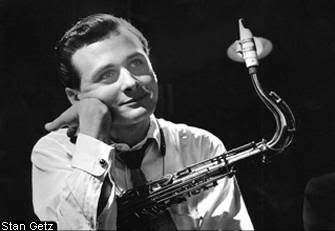
Real name: Stanley Getz
Born: Feb 2, 1927 in Philadelphia, PA
Died: Jun 6, 1991 in Malibu, CA
Genres: Jazz
Styles: West Coast Jazz, Hard Bop, Post-Bop, Bossa Nova, Cool
Instruments: Sax (Tenor)
One of the all-time great tenor saxophonists, Stan Getz was known as "The Sound" because he had one of the most beautiful tones ever heard. Getz, whose main early influence was Lester Young, grew to be a major influence himself and to his credit he never stopped evolving.
Stan Getz had the opportunity to play in a variety of major swing big bands while a teenager due to the World War II draft. He was with Jack Teagarden (1943) when he was just 16 and this was followed by stints with Stan Kenton (1944-45), Jimmy Dorsey (1945) and Benny Goodman (1945-46); he soloed on a few records with BG. Getz, who had his recording debut as a leader in July 1946 with four titles, became famous during his period with Woody Herman's Second Herd (1947-49), soloing (along with Zoot Sims, Herbie Steward and Serge Chaloff) on the original version of "Four Brothers" and having his sound well-featured on the ballad "Early Autumn." After leaving Herman, Getz was (with the exception of some tours with Jazz at the Philharmonic) a leader for the rest of his life.
During the early '50s Getz broke away from the Lester Young style to form his own musical identity and he was soon among the most popular of all jazzmen. He discovered Horace Silver in 1950 and used him in his quartet for several months. After touring Sweden in 1951 he formed an exciting quintet that co-featured guitarist Jimmy Raney; their interplay on uptempo tunes and tonal blend on ballads was quite memorable. Getz's playing helped Johnny Smith have a hit in "Moonlight in Vermont," during 1953-54 Bob Brookmeyer made his group a quintet and, despite some drug problems during the decade, Getz was a constant pollwinner. After spending 1958-60 in Europe, the tenorman returned to the U.S. and recorded his personal favorite album, Focus, with arranger Eddie Sauter's Orchestra. Then in Feb. 1962 Getz helped usher in the bossa nova era by recording Jazz Samba with Charlie Byrd; their rendition of "Desafinado" was a big hit. During the next year Getz made bossa nova flavored albums with Gary McFarland's big band, Luiz Bonfa and Laurindo Almeida, but it was Getz/Gilberto (a collaboration with Antonio Carlos Jobim and Joao Gilberto) that was his biggest seller, thanks in large part to "The Girl from Ipanema" (featuring the vocals of Astrud and Joao Gilberto).
Stan Getz could have spent the next decade sticking to bossa nova but instead he de-emphasized the music and chose to play more challenging jazz. His regular group during this era was a pianoless quartet with vibraphonist Gary Burton, he recorded with Bill Evans (1964), played throughout the 1965 Eddie Sauter soundtrack for Mickey One and made the classic album Sweet Rain (1967) with Chick Corea. Although not all of Getz's recordings from the 1966-80 period are essential, he proved that he was not shy to take chances. Dynasty with organist Eddie Louiss (1971), Captain Marvel with Chick Corea (1972) and The Peacocks with Jimmy Rowles (1975) are highpoints. After utilizing pianist Joanne Brackeen in his 1977 quartet, Getz explored some aspects of fusion with his next unit which featured keyboardist Andy Laverne. Getz even used an echoplex on a couple of songs but, despite some misfires, most of his dates with this unit are worthwhile. However purists were relieved when he signed with Concord in 1981 and started using a purely acoustic backup trio on most dates. Getz's sidemen in later years included pianists Lou Levy, Mitchell Forman, Jim McNeely and Kenny Barron. His final recording, 1991's People Time, (despite some shortness in the tenor's breath) is a brilliant duet set with Barron.
Throughout his career Stan Getz recorded as a leader for Savoy, Spotlite, Prestige, Roost, Verve, MGM, Victor, Columbia, SteepleChase, Concord, Sonet, Black Hawk, A&M and EmArcy among other labels (not to mention sessions with Lionel Hampton, Dizzy Gillespie and Gerry Mulligan) and there are dozens of worthy records by the tenor currently available on CD.
CAETANO VELOSO
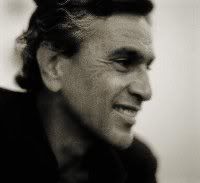
Caetano Veloso is one of the most important figures in contemporary Brazilian music. His works, poetic and polemic, are considered true masterpieces. As Caetano says, "I make my records as a painter would paint his canvas". In fact, he makes every melody he sings sound luminous and newly discovered.
Caetano Veloso was born in a small town in the northern state of Bahia in 1942. Soon after his family moved to Salvador, where he spent his youth and studied at the University of Arts.
At the end of 1966 he accompanied his sister Maria Bethania, who had been invited to play at a musical play, to Rio do Janeiro and he got his first hits when his sister recorded his first compositions. Soon he won several prizes and recorded his first album with Gal Costa "Domingo"
In 1968, with Gilberto Gil, he was one of the primary architects of Tropicalismo, a cultural movement whose aim was the reevaluation of traditional Brazilian music and the incorporation of non-Brazilian musical styles. He recorded his first individual album Caetano Veloso and his music crossed the borders with his controverted music E Proibido Proibir. He was awarded several prizes at several TV Festivals.
In 1969 he performed with Gilberto Gil at Castro Alves Theater in Salvador and the concert was recorded live. Barra 69 was the album. However in the same year Caetano and Gil were forced to leave the country by the military regime and went to live in London. There, they soaked up the era's psychedelic rock while sending songs back to Brazil to be recorded by singers like Gal Costa, Maria Bethania, Elis Regina, Roberto Carlos. He recorded his first album in English and performed in several European cities.
He returned to Brazil in 1972 and his audience continued to grow. Another album Transa was released and he performed in several cities and other album was recorded alive, this time with Chico Buarque: caetano e Chico Juntos a ao Vivo.
Several albums were released the following years: Araca Azul in 1974, Temporada de Verao in 1974, Joia and Qualquer Coisa in 1975.
In 1976 he teamed up with Gilberto Gil, Gal Costa and Maria Bethania toured Brazil under the name of Doces Barbaros, An album and a film were released.
Bicho was released in 1977 and the hot rhythm of the sweet melodies of this album had the influence of the contact he had with the Nigerian culture, where he had been months before. The same year Alegria, Alegria was published, a book which is a collection of articles and poems of the years 1965 to 1976.
During the 1970's and 80's his music reasserted its sinuous, harmonically sophisticated tunefulness after his flirtation with blunt rock-and-roll, while his lyrics grew more associative and imagistic, blending an embracing romanticism with glimpses of stark clarity. The albums released were: Muito in 1978, Maria Bethania & Caetano Veloso in 1978, Cinema Transcendental in 1979, Outras Palavras in 1981, Cores Nomes in l982, Uns in 1983, Velo in 1984, Totalmente Demais in 1986 and Caetano in 1987.
Estrangeiro released in 1989, is a natural follow up to what he had been doing all along in Brazil, mixing of old fashioned Brazilian and South American things with new rock and new Brazilian things mostly Bossa Nova.
Caetano Veloso, his first U S album released in 1987, was a selection of his songs from the two previous decades. Backed only by his own acoustic guitar, his voice, tender but sure had the sound of a poet ruminating over his past, examining it with affection and curiosity.
In 1991 a new album was released Circulado. The music which gave name to the album is a poem by a Brazilian concrete poet, Harol do Campos. The cover design was a creation of Caetano, Circulado Vivo, released in l992 is a master piece. Making a story of each song he sings, Michael Jackson's Black or White or Dylan's Jokerman with a practical feeling no one has ever listened, he shifts from bossa-nova to tango tailoring his interpretations with a skill of a genius. The Circulado tour was one of the most important and beautiful concerts he did and became a home-video.
In 1993 was released Tropicalia 2 with Gilberto Gil. A celebration of 25 years of Tropicalia and 30 years of friendship of both genius. A new record, a new book are some of the projects of Caetano this year.








